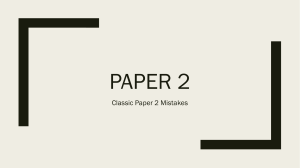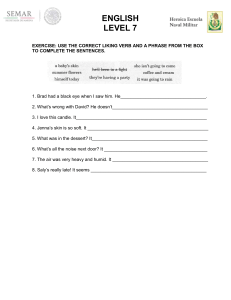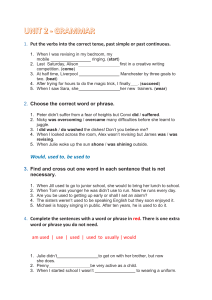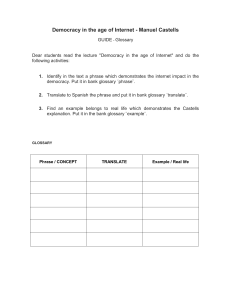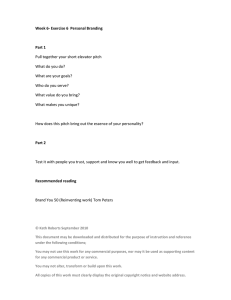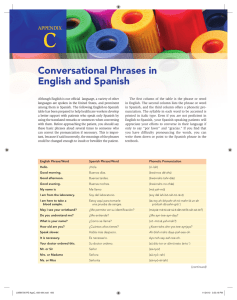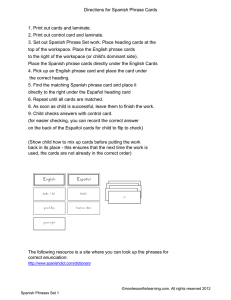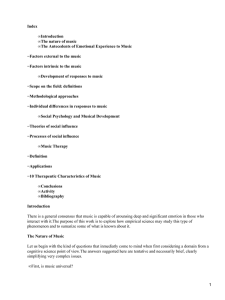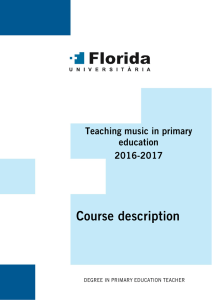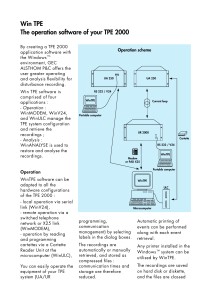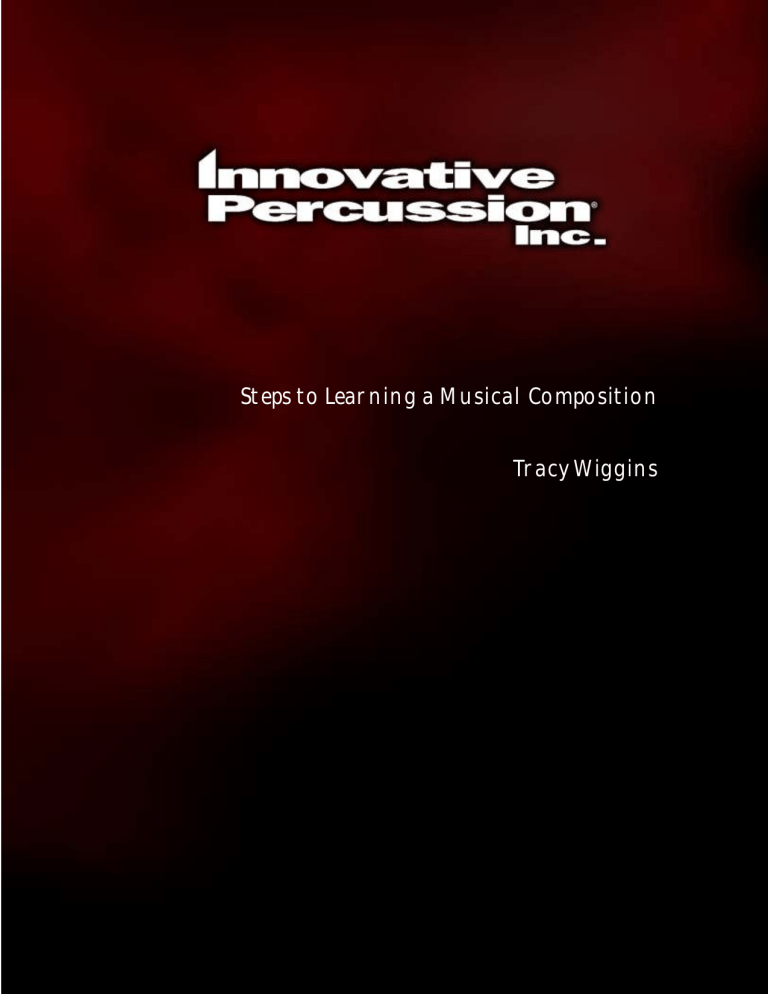
Steps to Learning a Musical Composition Tracy Wiggins or three part form? Is it a theme and variation, or is it through composed? Steps for Learning a Musical Composition Tracy Wiggins Tell me if this sounds familiar: You are rolling along in your lesson, and everything is going fine. You get to the end, and your teacher says, “Okay, now I want you to learn this for next week.” At this point he or she hands you a new piece of music and sends you away. You look down at the piece of music in your hands and think to yourself, “Now what?” I hope this article will help answer that very question. I will present the system I utilize for learning a piece of music, be it a solo, ensemble, orchestral or conductor’s score. This is my approach to doing it and every musician has his or her way. This is by no means Gospel, but it works for me. Step 1 – Observe the Piece While Sitting at a Desk or Table Who wrote the piece? When did he/she live and/or die? What do you know about the composer? If in doubt, look it up. When was the piece written? Put it in historical context by looking up world events, as well as other art forms that occurred during the same time. Look through the score and be sure you understand all of the foreign terminology. Look for musical and/or rhythmic figures or sections that seem to occur often. Finding these will keep you from re-learning them every time. Is the piece tonal or atonal? Does it seem to revolve around any particular notes, chords, or scales? Is it in a key? Does it modulate? Sing the musical lines to yourself, or play them at a piano to begin getting them in your ear. Find the large structures of the piece. Look for breaks in the piece, including, but not limited to cadences and fermatas. Key changes can also be a sign of a structural change. Is the piece in one, two Make notes of all of these observations in your music so you can refer to them as you practice. Also write in preliminary stickings, fingerings, pitch tendencies, or other projected problems that you are aware of so you can learn it correctly. Step 2 – Begin Practicing at Your Instrument Use a metronome whenever practicing! The first two parts of Step 2 are interchangeable. Decide which step is first based upon whether the student finds pitch or rhythm easier to learn successfully. Start with whichever comes most naturally to the student. Learn the rhythms, dynamics and articulations out of context. By taking pitch out of the learning process, students can increase their sense of rhythmic accuracy on a work. Work through the piece using a metronome, performing the rhythms, dynamics and articulations only by utilizing a practice pad. By doing this, you take out the scariest part for many students, which is the changing notes. Learn the notes out of rhythm. In this technique, your muscles are learning the motions between notes without having to be concerned with the rhythm. Concentrate on the movement your muscles have to make from note to note. Be very deliberate, so the motion has time to register in your brain. For percussionists, dead strokes can be a useful tool as they give the muscles a bit more time to register. This is also a good way to see if you have awkward stickings to work out. If you do, write your corrections into the music, so you practice them the same way every time. Work slowly and methodically. A good and useful technique is to set the metronome on a very slow tempo for learning a piece. This way you do not have to worry about rushing through the piece and can concentrate on accuracy. This will keep you from having to re-learn parts of the music later. Focus on kinesthetic learning. This is your muscle memory. By practicing slowly your muscles will learn where they are supposed to go for every note and phrase of the music. Memorize the motion between notes and focus on staying as smooth as possible at all times. Make notes in your music often. If you have a sticking that needs to be used for a particular note, write it in so that you practice it the same way EVERY time. Make a record of your pitch tendencies and write those in. Mark passages that give you particular problems so you know to come back to them. Practice in short phrases. When you are beginning a new piece, do not try to learn it all at once. Using the information you have gained for you score study, break the piece into smaller sections. Be realistic about how much you can learn accurately in each practice session. Learn a phrase and then learn another phrase. After you have two phrases learned, connect them into a longer phrase. Play the phrase three to five times in a row accurately before you move on to the next phrase. If you can do this, you will know that you “have it down.” A good technique is to set up two jars, one empty and one filled with three to five coins. After you play the phrase correctly, move a coin from one jar to the other. Move a coin every time you play the phrase correctly. If, before all of the coins are moved, you make a mistake, put all of the coins back and start again. BEFORE you begin again, make sure you are aware of what the mistake was and how you need to correct it. If you need to practice that phrase again, this is the time to do it. Second, after I have completed learning the notes and rhythms to a piece, I will listen to as many recordings of it as I can get. This way, I will have formed my own opinions about phrasing without being influenced by someone else. Then, if I hear something in someone else’s performance I like, I can incorporate it into my performance. Preparing for Ensemble Performances Follow the above steps to learn your individual part. At the same time, be listening to as many recordings of the piece as you can access. This enables you to see what the different approaches are to the part, and to use this information to inform your musical decision. You should also look through the score to see how your part lines up with the rest of the ensemble. You should locate those parts that align with yours to help you keep track of where you are and so you know what instruments you will be listening for as you play the work. Pay particular attention to the transitions between phrases, and work them if necessary. Transitions are where some of the most awkward moments in music can occur, from rhythmic errors to memorization mistakes. Be sure they are smooth, both rhythmically and musically. If you are memorizing a piece, use the short phrases used when learning the piece. Memorizing the piece as you learn it can prevent you from having to do it later. Step 3 – Perform the Piece More than Once Nothing is more frustrating than spending a lot of time on a piece, performing it once and then putting it away. Look for additional performances on studio recitals, departmental recitals, at churches or just for some friends in a practice room. Not only will the piece get better the more you perform it, but you will become a better performer as well. A Note About Listening to Solo Recordings I feel there are two times to listen to a recording of a piece you are learning. First, when you are deciding whether or not to learn the piece, listen to it and decide if it is something worth your investment of time. This will also get the piece into your ear for when you start doing your score observation. After I start learning a piece, I try to avoid listening to recordings until after I have completed the work. Tracy Wiggins is the coordinator of the percussion programs that the University of North Carolina at Pembroke. Mr. Wiggins is also a candidate for the Doctor of Musical Arts degree at HARTT School, University of Hartford. He holds a Masters Degree in Percussion Performance from the University of New Mexico and a Bachelors Degree in Music Education from Oklahoma State University. www.innovativepercussion.com
